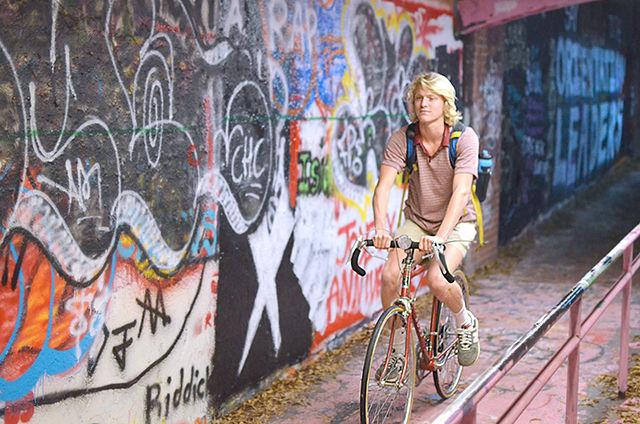With a recent study naming North Carolina one of the top 10 deadliest state in the nation for cyclists, and state transportation data showing Wake County as having the most bicycle-car accidents in the state, bicyclists at NC State must be especially prudent while traveling around the university.
North Carolina is the eighth deadliest state for bicyclist, averaging 25 fatalities each year, according to Governing magazine.
Based on the state transportation data from 2008 to 2012, Wake County has the highest number of both fatal and non-fatal bicycle-car accidents in the state, according to the Indy Week.
While the numbers of accidents are high for areas around NC State, some student bicyclists, such as Christopher Cole, a freshman studying first year engineering who was hit by a car while riding his bicycle on Cates Ave earlier this semester, still feel safe riding bikes around NC State’s campus.
Cole was riding his bicycle across the crosswalk in front of Carmichael Gym at the Talley Student Union loading docks when he collided with a car.
Cole was later taken to the hospital as a result of the incident.
“I went to make sure there wasn’t anything majorly wrong,” Cole said. “I just ended up with a sprained ankle and a few scratches.”
Cole said that NC State police swiftly responded to the accident and redirected traffic from the area.
Despite his accident, Cole said he feels safe riding his bike on NC State’s campus.
“I feel like it is a pretty safe place to ride bikes,” Cole said. “I still use my bike to get around campus, and I think the crash was just a one-time freak accident. If I had seen this happen multiple times, I would be a little more cautious and worried.”
Emma Blondin, a sophomore studying design studies who rides her bicycle to campus most days, said the roundabouts surrounding the university are the biggest safety hazard student’s face when riding to and from classes.
“I think NC State is doing a good job,” Blondin said. “It’s the roundabouts near campus that make me feel unsafe. Some people just don’t know how to use them.”
A total of seven bicycle-car accidents have occurred on NC State’s campus since January, according to Thomas Vigilante, NC State’s Emergency Communications Center director.
Of the seven incidents, four were classified as reportable crashes because they either involved injuries or resulted in more than $1,000 in estimated damages to all property as a result of the crash, according to Vigilante.
“The three others did not meet either of these criteria and were classified as non-reportable,” Vigilante said.
Beyond campus, Blondin said she also rides her bike around downtown Raleigh. She said, while never having been involved in an accident there, it is not uncommon for her to encounter agitated drivers.
“Some people are just assholes on the road,” Blondin said. “And others you can tell are very uncomfortable when driving near cyclists. They will move all the way into the next lane just to pass you.”
While students should always look out for cars while riding, navigating a college campus poses more risks to bicyclists than cars alone, according to Lindsay Greene, a freshman studying design studies.
“It’s mostly the people walking around campus that I worry about,” Greene said. “People are always walking out in front of me without looking, and I always have to be extremely careful to not run into someone who isn’t paying attention to their surroundings.”
In terms of safety improvements within the university’s control, Cole and Blondin both said NC State doesn’t necessarily need to make any major changes to ensure cyclists safety on campus.
“I think some places might need more bike racks, like at Talley and the Brickyard,” Blondin said. “But otherwise, NC State is doing a good job.”








